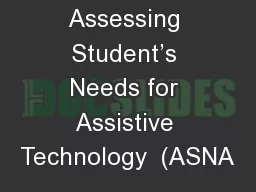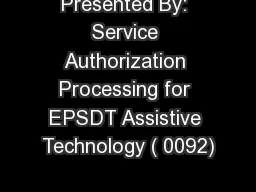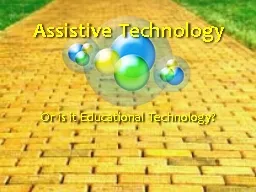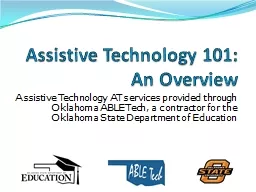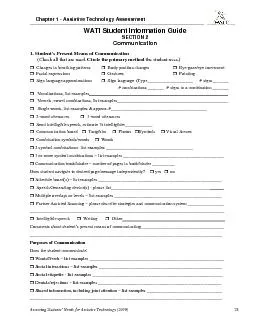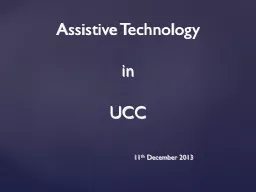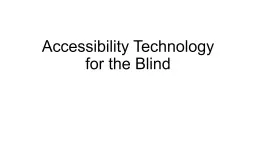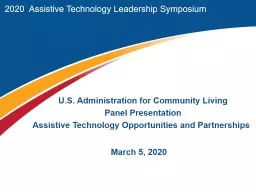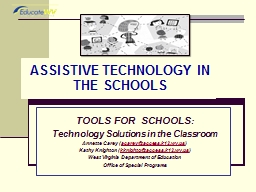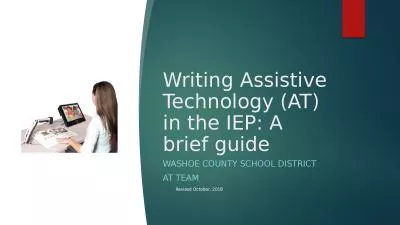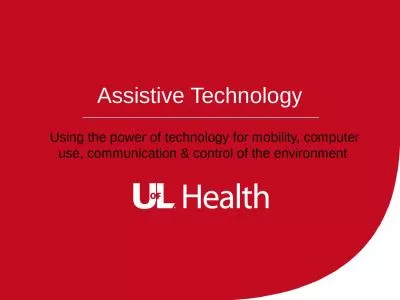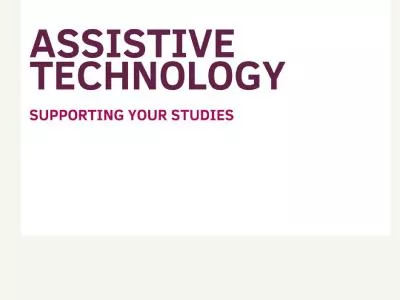PDF-Assistive Technology
Author : willow | Published Date : 2022-08-16
Page 1 of 4 What You Need to Know Library Accessibility Tip Sheet 11 Overview Assistive also called adaptive technologies are ele ctronic solutions that enable people
Presentation Embed Code
Download Presentation
Download Presentation The PPT/PDF document "Assistive Technology" is the property of its rightful owner. Permission is granted to download and print the materials on this website for personal, non-commercial use only, and to display it on your personal computer provided you do not modify the materials and that you retain all copyright notices contained in the materials. By downloading content from our website, you accept the terms of this agreement.
Assistive Technology: Transcript
Download Rules Of Document
"Assistive Technology"The content belongs to its owner. You may download and print it for personal use, without modification, and keep all copyright notices. By downloading, you agree to these terms.
Related Documents


